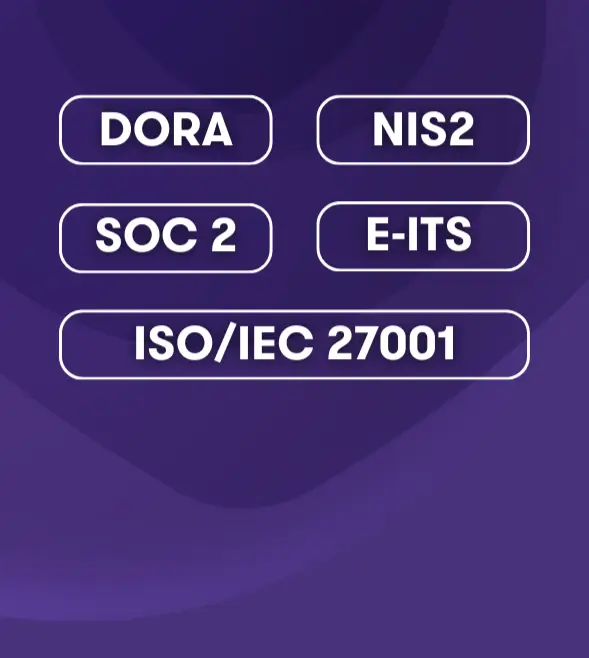-
Other audit services
We help clients with the application and use of foreign financial aid of EU and other funds and help prepare financial reports.
-
Audit calculator
The calculator will answer if the company's sales revenue, assets or number of employees exceed the limit of an inspection or audit.
-
Payroll and related services
We perform payroll accounting for companies whether they employ a few or hundreds of employees.
-
Tax accounting
Grant Thornton Baltic's experienced tax specialists support accountants and offer reasonable and practical solutions.
-
Reporting
We prepare annual reports in a timely manner. We help to prepare management reports and various mandatory reports.
-
Consolidation of financial statements
Our experienced accountants and advisors help you prepare consolidation tables and make the consolidation process more efficient.
-
Consultancy and temporary staff
Our experienced specialists advise on more complex accounting transactions, rectify poor historic accounting, and offer the temporary replacement of an accountant.
-
Outsourced CFO service
Our CFO service is suitable for companies of all sizes and in all industries. We offer services to our clients in the required amount and competences.
-
Assessment of accounting processes
We help companies to implement accounting practices that are in compliance with local and international standards.
-
Accounting services for small businesses
We offer affordable service for small businesses. We help organize processes as smartly and cost-effectively as possible.
-
Cryptocurrency accounting
We keep up with blockchain technology to serve and advise crypto companies. We are supported by a network of colleagues in 130 countries.
-
Trainings and seminars
Our accountants have experience in all matters related to accounting and reporting. We offer our clients professional training according to their needs.

-
Business advisory
We offer legal support to both start-ups and expanding companies, making sure that all legal steps are well thought out in detail.
-
Fintech advisory
Our specialists advise payment institutions, virtual currency service providers and financial institutions.
-
Corporate advisory
We advise on legal, tax and financial matters necessary for better management of the company's legal or organizational structure.
-
Transaction advisory
We provide advice in all aspects of the transaction process.
-
Legal due diligence
We thoroughly analyze the internal documents, legal relations, and business compliance of the company to be merged or acquired.
-
In-house lawyer service
The service is intended for entrepreneurs who are looking for a reliable partner to solve the company's day-to-day legal issues.
-
The contact person service
We offer a contact person service to Estonian companies with a board located abroad.
-
Training
We organize both public trainings and tailor made trainings ordered by clients on current legal and tax issues.
-
Whistleblower channel
At Grant Thornton Baltic, we believe that a well-designed and effective reporting channel is an efficient way of achieving trustworthiness.

-
Business model or strategy renewal
In order to be successful, every company, regardless of the size of the organization, must have a clear strategy, ie know where the whole team is heading.
-
Marketing and brand strategy; creation and updating of the client management system
We support you in updating your marketing and brand strategy and customer management system, so that you can adapt in this time of rapid changes.
-
Coaching and development support
A good organizational culture is like a trump card for a company. We guide you how to collect trump cards!
-
Digital services
Today, the question is not whether to digitize, but how to do it. We help you develop and implement smart digital solutions.
-
Sales organisation development
Our mission is to improve our customers' business results by choosing the right focuses and providing a clear and systematic path to a solution.
-
Business plan development
A good business plan is a guide and management tool for an entrepreneur, a source of information for financial institutions and potential investors to make financial decisions.
-
Due diligence
We perform due diligence so that investors can get a thorough overview of the company before the planned purchase transaction.
-
Mergers and acquisitions
We provide advice in all aspects of the transaction process.
-
Valuation services
We estimate the company's market value, asset value and other asset groups based on internationally accepted methodology.
-
Forensic expert services
Our experienced, nationally recognized forensic experts provide assessments in the economic and financial field.
-
Business plans and financial forecasts
The lack of planning and control of cash resources is the reason often given for the failure of many businesses. We help you prepare proper forecasts to reduce business risks.
-
Outsourced CFO service
Our CFO service is suitable for companies of all sizes and in all industries. We offer services to our clients in the required amount and competences.
-
Reorganization
Our experienced reorganizers offer ways to overcome the company's economic difficulties and restore liquidity in order to manage sustainably in the future.
-
Restructuring and reorganisation
We offer individual complete solutions for reorganizing the structure of companies.
-
Corporate taxation
We advise on all matters related to corporate taxation.
-
Value added tax and other indirect taxes
We have extensive knowledge in the field of VAT, excise duties and customs, both on the national and international level.
-
International taxation
We advise on foreign tax systems and international tax regulations, including the requirements of cross-border reporting.
-
Transfer pricing
We help plan and document all aspects of a company's transfer pricing strategy.
-
Taxation of transactions
We plan the tax consequences of a company's acquisition, transfer, refinancing, restructuring, and listing of bonds or shares.
-
Taxation of employees in cross-border operations
An employee of an Estonian company abroad and an employee of a foreign company in Estonia - we advise on tax rules.
-
Tax risk audit
We perform a risk audit that helps diagnose and limit tax risks and optimize tax obligations.
-
Representing the client in Tax Board
We prevent tax problems and ensure smooth communication with the Tax and Customs Board.
-
Taxation of private individuals
We advise individuals on personal income taxation issues and, represent the client in communication with the Tax and Customs Board.
-
Pan-Baltic tax system comparison
Our tax specialists have prepared a comparison of the tax systems of the Baltic countries regarding the taxation of companies and individuals.
-
Internal audit
We assist you in performing the internal audit function, performing internal audits and advisory work, evaluating governance, and conducting training.
-
Internal Audit in the Financial Services Sector
We provide internal audit services to financial sector companies. We can support the creation of an internal audit function already when applying for a sectoral activity license.
-
Audit of projects
We conduct audits of projects that have received European Union funds, state aid, foreign aid, or other grants.
-
Prevention of money laundering
We help to prepare a money laundering risk assessment and efficient anti-money laundering procedures, conduct internal audits and training.
-
Risk assessment and risk management
We advise you on conducting a risk assessment and setting up a risk management system.
-
Custom tasks
At the request of the client, we perform audits, inspections and analyzes with a specific purpose and scope.
-
External Quality Assessment of the Internal Audit Activity
We conduct an external evaluation of the quality of the internal audit or provide independent assurance on the self-assessment.
-
Whistleblowing and reporting misconduct
We can help build the whistleblowing system, from implementation, internal repairs and staff training to the creation of a reporting channel and case management.
-
Information security management
We provide you with an information security management service that will optimise resources, give you an overview of the security situation and ensure compliance with the legislation and standards.
-
Information security roadmap
We analyse your organisation to understand which standards or regulations apply to your activities, identify any gaps and make proposals to fix them.
-
Internal audit of information security
Our specialists help detect and correct information security deficiencies by verifying an organization's compliance with legislation and standards.
-
Third party management
Our specialists help reduce the risks associated with using services provided by third parties.
-
Information security training
We offer various training and awareness building programmes to ensure that all parties are well aware of the information security requirements, their responsibilities when choosing a service provider and their potential risks.
-
Digital Operational Resilience Act (DORA)
We will help you create a DORA implementation model that meets your company's needs and ensures that you meet the January 2025 deadline.

-
ESG advisory
We help solve issues related to the environment, social capital, employees, business model and good management practices.
-
ESG audit
Our auditors review and certify sustainability reports in line with international standards.
-
Sustainable investments
We help investors conduct analysis of companies they’re interested in, examining environmental topics, corporate social responsibility and good governance practices.
-
Sustainable tax behaviour
Our international taxation specialists define the concept of sustainable tax behaviour and offer services for sustainable tax practices.
-
ESG manager service
Your company doesn’t necessarily need an in-house ESG manager. This role can also be outsourced as a service.

-
Recruitment services – personnel search
We help fill positions in your company with competent and dedicated employees who help realize the company's strategic goals.
-
Recruitment support services
Support services help to determine whether the candidates match the company's expectations. The most used support services are candidate testing and evaluation.
-
Implementation of human resource management processes
We either assume a full control of the launch of processes related to HR management, or we are a supportive advisory partner for the HR manager.
-
Audit of HR management processes
We map the HR management processes and provide an overview of how to assess the health of the organization from the HR management perspective.
-
HR Documentation and Operating Model Advisory Services work
We support companies in setting up HR documentation and operational processes with a necessary quality.
-
Employee Surveys
We help to carry out goal-oriented and high-quality employee surveys. We analyse the results, make reports, and draw conclusions.
-
HR Management outsourcing
We offer both temporary and permanent/long-term HR manager services to companies.

-
Digital strategy
We help assess the digital maturity of your organization, create a strategy that matches your needs and capabilities, and develop key metrics.
-
Intelligent automation
We aid you in determining your business’ needs and opportunities, as well as model the business processes to provide the best user experience and efficiency.
-
Business Intelligence
Our team of experienced business analysts will help you get a grip on your data by mapping and structuring all the data available.
-
Cybersecurity
A proactive cyber strategy delivers you peace of mind, allowing you to focus on realising your company’s growth potential.
-
Innovation as a Service
On average, one in four projects fails and one in two needs changes. We help manage the innovation of your company's digital solutions!


E-invoices celebrate their first minor anniversary – submitting invoices to the public sector in this format has been obligatory for five years, while technical support for e-invoicing has existed on the market for more than 10 years. But the hope that the private sector would organically embrace the state’s role model has not come to fruition.
The draft amendments to the Accounting Act, introduced on 6 May and will reach its second reading by the Parliament on 11 September (no. 428 SE) are aimed at removing the obstacles to the use of e-invoices in the private sector and encouraging the adoption of the European standard on e-invoicing.[1]
According to an Ernst & Young Baltic study conducted in 2021, the main obstacle facing the adoption of e-invoices were the e-invoicing double standard (Estonia’s own standard vs. the European standard) and the coercive nature of implementation of e-invoices, which led to psychological resistance. Microenterprises and small businesses often were plagued by low awareness of the possibilities of invoices, the selection of the right operator service and software configurations.[2]
Don’t we know how to count money?
But let’s start from the scratch. Why is sending and receiving of e-invoices been neglected and why has the private sector’s interest been lukewarm? Statistics show that e-invoicing is cheaper than sending invoices on paper or as a PDF file. So what’s the matter? Don’t people know how to count money?
Nearly every quality accounting software package developed for the Estonian market supports e-invoicing. So for accountants, the reason is definitely not that it’s harder to send invoices than emailing good old PDF invoices.
The root of the problem, I think, lies in the capability to receive e-invoices. In other words, there hasn’t been enough outreach to educate people about the operators for receiving e-invoice, their contract terms, software requirements and price of service. The entrepreneur has to do this work themselves or call on an accountant to find the solution that’s right for them. Today there is a wide selection of operators: some who will offer a certain number of e-invoices for free and those who provide a variety of additional functions. The question comes down to understanding what is actually needed.
The other reasons in my opinion is that various fears get in the way of adopting e-invoicing – i.e., business people don’t know whether the counterparty can receive e-invoices, or whether the counterparty even wants e-invoices; maybe there will be too much scrutiny about what is being purchased and why; the Tax and Customs Board is getting access to too much information, and so on.
I believe the government has done too little to dispel such concerns. Solely amending a law to make it obligatory to start sending e-invoices if the buyer of the goods or service so demands and has registered with the Commercial Register as an e-invoice recipients will not dispel fears and get more e-invoices into circulation on the market.
Adding the planned change in connection to submission of VAT returns where instead of the current form, the source data for the calculation of VAT must be declared to the tax authority and I understand how people in business feel.[3]
What will change on 1 January 2025?
Under the proposed amendments to the Accounting Act, a company itself, provided that it has a contract with a service provider, can file an application to the Commercial Register to add an e-service processing service provider to its registry card.
Under the current rules, only an e-invoice operator can initiate the making of a change on the registry card, not the company itself. The reason behind the amendment is to allow foreign e-invoice operators’ service to be used as well and to thereby simplify the registration process.
Estonia’s own technical standard requirements for e-invoices will be revoked in the Accounting Act as well, since this is already covered by the European e-invoice standard.
The most important amendment pertains to buyers who have already registered as e-invoice recipients. They can now demand vendors to e-invoice for paying for goods or services they buy. Note that the buyer has the right, not the obligation to make that demand. In other words, nothing keeps companies who want to continue the old way from doing so. But the ones who feel that e-invoices are beneficial can do so.
The alternative recommendation that we’ve read and heard in the media is to agree on the rules for submission of invoices in the contract, to avoid any disputes and confusion.[4]
The Estonian Chamber of Commerce and Industry raised a question during the endorsement round for the amendments: In a situation where the buyer demands an e-invoice, but the seller sends the invoice in PDF form, can the buyer refuse to pay? I can’t agree with the Ministry of Finance position that this constitutes a pretext to not pay for goods or services and I don’t recommend that businesses go this path.
Besides, the legislation sets out requirements for the format of e-invoices. An e-invoice is in the required format if it conforms to the European e-invoicing standard. However, there will still be the option of agreeing on another invoice format.
Interested in making the switch to e-invoicing?
If a company has its accounting in some accounting program developed for the Estonian market, there will probably be no problem sending and receiving e-invoices – generally, the interface can be activated with a few keystrokes (such as in Merit Tarkvara, Acclouding, Directo or Standard Books). Yes, there is usually a fee for the service. But it shouldn’t be forgotten that e-invoicing also reduces the data entry work and other time expenditure for the accountant. The best-known e-invoicing operators in Estonia are Telema, Finbite, e-arveldaja, Unifiedpost Group and Envoice. So there are plenty of service providers and more are expected to enter the picture.
Smart software programs can also identify through the Commercial Register interface whether a client is capable of receiving e-invoices, doing away with the worry about whether customers can be quickly and conveniently invoiced.
Yet it will certainly take some getting used to invoices not landing in an inbox at the start of the month but directly into software. That means having to think about who accepts invoices and how. There are many options, like for example giving certain individuals the right of approval in the software or e-invoicing operator environment, or for accepting payments at a bank. Those who do their own accounting will surely stand to free up time by moving to e-invoicing – no more having to manually key data from PDFs into the electronic ledger. By outsourcing accounting service, diligent accountants can easily set up an invoice approval list and will still have an overview of the company’s purchases.
It can’t be denied that e-invoicing solutions aren’t yet ideal and e-invoice operators have room for improvement – be it additional documents accompanying invoices, recurring e-invoices or the greater amount of information on automatically pre-filled fields. Yet e-invoices are undoubtedly a trend worth adopting, because it allows information to be rapidly and conveniently streamlined into one channel, giving more time to focus on analysis or visualization of data. It shouldn’t be forgotten that e-invoicing also speeds up the flow of information.
I recommend that small businesses and self-employed who don’t feel at home in accounting software call on a good accountant who can set up the basic configurations in programme or help them choose their e-invoicing operator. This is of course if the business partners are ones who require e-invoicing.
To sum up, it will take significantly more explaining and instructions why and how the e-invoicing system works and how to get it to work. Accounting software packages include interfaces with the largest service providers; what is necessary now is for businesses to want to activate them.
Adopting e-invoicing must be as simple a process as possible even for the non-IT savvy, and companies should retain the option of choosing their invoice format, particularly if they do business outside Estonia.
[1] https://www.riigikogu.ee/tegevus/eelnoud/eelnou/474f591f-8fcf-44ad-8e0d-d2bf68854d65/raamatupidamise-seaduse-muutmise-seadus.
[2] The Ernst &Young Baltic analysis can be found at https://www.fin.ee/media/4658/download.
[3] Draft VAT Act amendment published in the draft legislation information system: https://eelnoud.valitsus.ee/main/mount/docList/bab40de5-5e91-4ee8-be79-37d644eb9375.
[4] Annika Vaik. "Let’s not be hasty making obligatory e-invoicing the law”. https://www.aripaev.ee/arvamused/2024/05/09/ekspert-arme-rabista-kohustuslike-e-arvete-joustamisega.
If you have similar challenges and questions, please contact our specialists.







